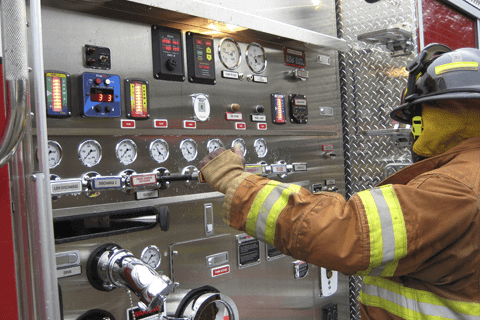When Mother Nature Has an Attitude...™
You Need NIMBUS™4
The New Generation of Real-Time Storm Detection
INTRODUCTION TO

The most advanced, real-time, site specific severe weather detection technology available today.
Entropy develops technology and products to detect real-time lightning, severe weather and tornado conditions that provide a premium level of data to users and applications currently not available from other sources. Coming Soon!
Please Note: www.nimbus4.com has moved to it's new home at www.entropytechnologydesign.com
Video and Audio.
DETECTION CAPABILITIES
Fast-developing, severe-weather situations involving thunderstorms, squall-lines, and tornados represent the greatest loss and liability threat to property and lives.

LIGHTNING
The foundation of the NIMBUS™ system is a multi-microprocessor architecture, which uses direct-to-digital detection of lightning waveforms. This high-resolution data is then analyzed by the NIMBUS™ software to categorize cloud-to-ground, cloud-to-cloud, and positive polarity lightning events.

SQUALL LINES
NIMBUS™ is capable of detecting both positive and negative polarity lightning strikes. Important because positive strikes are the most dangerous and occur in the most dangerous/severe thunderstorms or as squall lines are forming.

TORNADO CONDITIONS
Larger systems are designed to detect much larger weather events covering state-wide areas. The most dangerous forms of storm activity, such as tornados, develop rapidly and on a much smaller scale than the types of events normally captured on the large-scale radar systems.
Real-Time HandHeld severe storm Detection

NIMBUS™ Technology
The foundation of the NIMBUS™ system is a multi-microprocessor architecture, which uses direct-to-digital detection of lightning waveforms. This high-resolution data is then analyzed by the NIMBUS™ software to categorize cloud-to-ground, cloud-to-cloud, and positive polarity lightning events.
In turn, this data is converted into active storm models that can track the approach of thunderstorms and squall lines, and display this information in the form of messages that translate speed and distance measurements into time for the user.
A key proprietary feature of the NIMBUS™ software is the ability to detect and identify fast-transient weather events that are the signatures of the most dangerous types of storm activity.
NIMBUS™ technology is direct real-time detection of localized fast-developing weather conditions, providing a level of weather data to users that is difficult or impossible to get from standard weather information sources.
The lack of accurate, real-time local storm information right now is primarily because the National Weather Radar system is designed to detect much larger weather events covering state-wide areas. The signatures of the most dangerous forms of storm activity, such as tornados, develop rapidly and on a much smaller scale (several thousand meters or less) than what is normally detected on the large-scale radar systems.
These fast-developing, severe-weather situations involving thunderstorms, squall-lines, and tornados represent the greatest loss of life and liability to commerce, industry, and government.

About 100 Cloud to Ground Lightning Bolts Strike the Earth's Surface Every Second!
Each bolt can contain up to one billion volts of electricity. This is the equivalent of approximately 8.6 million strikes per day. – NationalGeographic.com
Lightning is extremely hot—a flash can heat the air around it to temperatures five times hotter than the sun’s surface. This heat causes surrounding air to rapidly expand and vibrate, which creates the pealing thunder we hear a short time after seeing a lightning flash. Lightning is not only spectacular, it’s dangerous. About 2,000 people are killed worldwide by lightning each year. Hundreds more survive strikes but suffer from a variety of lasting symptoms, including memory loss, dizziness, weakness, numbness, and other life-altering ailments.















Support for Emergency Management and Other Applications
One of the primary features of the NIMBUS™ storm-tracking technology is the capability of finding the most dangerous areas of a larger storm system. This capability is the result of the very high resolution of the lightning data being detected by the NIMBUS™, along with the ability to process very high rates of incoming data. Since the NIMBUS™ is collecting data in real-time and from remote locations, the information is processed and made available to the user immediately.
This type of storm detection and processing makes the NIMBUS™ technology ideal for use by emergency management personnel when dealing with large-scale weather systems such as hurricanes, and immediately identifying most dangerous local areas in the storm that are producing high winds and potential tornado conditions. Since the NIMBUS™ detection is entirely self-contained and does not rely on any outside information, it can be made portable and offers a fail-safe severe weather information source when all other communication and power systems may be disabled.





